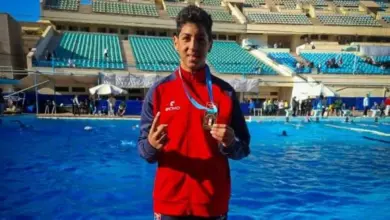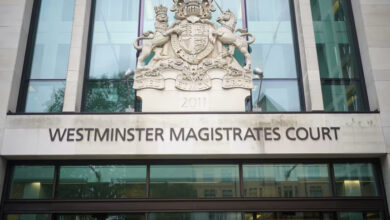While Mubarak is gone, a legal battle lingers concerning his name and photos that line the walls of public institutions.
After an administrative court ordered Mubarak’s name be removed, a second court issued a ruling to halt the previous court order. Samir Sabry, the main lawyer who raised the suit, appealed the most recent order, and he awaits a hearing on 10 November.
“Naming public establishments after presidents is a pharaonic legacy,” Sabry told Al-Masry Al-Youm.
Sabry said that he raised the suit after the corruption, profiteering, and abuse of authority of the old regime was proven. “I made the decision [to raise the suit] after investigations by the Public Prosecution and Illicit Gains Authority led to the imprisonment of ex-president Hosni Mubarak, his wife, some ex-ministers, businessmen and to the freezing of their assets and those of their children and wives.”
In the first court order, the judge noted the general feeling of anger among Egyptians toward officials of the bygone regime, according to Sabry. After it was followed by spotty implementation by authorities, the cabinet issued a decree ordering Mubarak names and pictures removed from all public bodies.
Sabry added that he raised the suit on his own initiative, not having any personal ties to Mubarak’s family.
But Sabry has encountered fierce opposition from Mubarak loyalists. Youssry Abdel Razeq, the lawyer contesting Sabry, says he gathered 17,000 signatures from across the country to support keeping Mubarak names and photos on public institutions. Five thousand of those signatures come from Kafr al-Moseilha, the toppled president’s hometown.
“God will help us and we will win the case and [Prime Minister Essam] Sharaf will have to put up all the name signs at his own expense,” he told Al-Masry Al-Youm. “The ruling issued in this regard was not final and therefore, I warn Sharaf to restore the names he lifted at his own expense or I will allege that he has squandered public money.”
Asked about his motivations when adopting the case, Abdel Razeq said confidently, “I did so as an Egyptian citizen who loves the former president and considers him an icon. Samir Sabry does not have the authority to file the case because he does not represent the whole nation and does not have proxies from the people.”
Abdel Razeq is not impressed by the fact that Mubarak and his sons are, in fact, facing trials of corruption and killing protesters, a third hearing for which will take place on 5 September.
“Those who say that the Mubarak trial represents the wish of the entire nation are spreading lies that seek to bring down the state and not only the president. The 200,000 people who gathered in Tahrir do not represent the wishes of 80 million Egyptians,” he said, referring to the 18-day Tahrir sit-in that ended with Mubarak’s ouster on 11 January.
For Sabry, the issue transcends that of Mubarak’s case and is one pertaining to a nascent democracy in a revolutionary Egypt.
Flooding a country’s walls with names and photos of presidents is part of Arab political culture, he says.
“This is excessive glorification of officials. In the US, I didn’t see any pictures for [US President Barack] Obama at any government authority or public square. This is all hypocrisy. Suppose Suzanne Mubarak did provide services to the several associations that carried her name, were those services provided from her own money, or the people’s?” Sabry asks.




